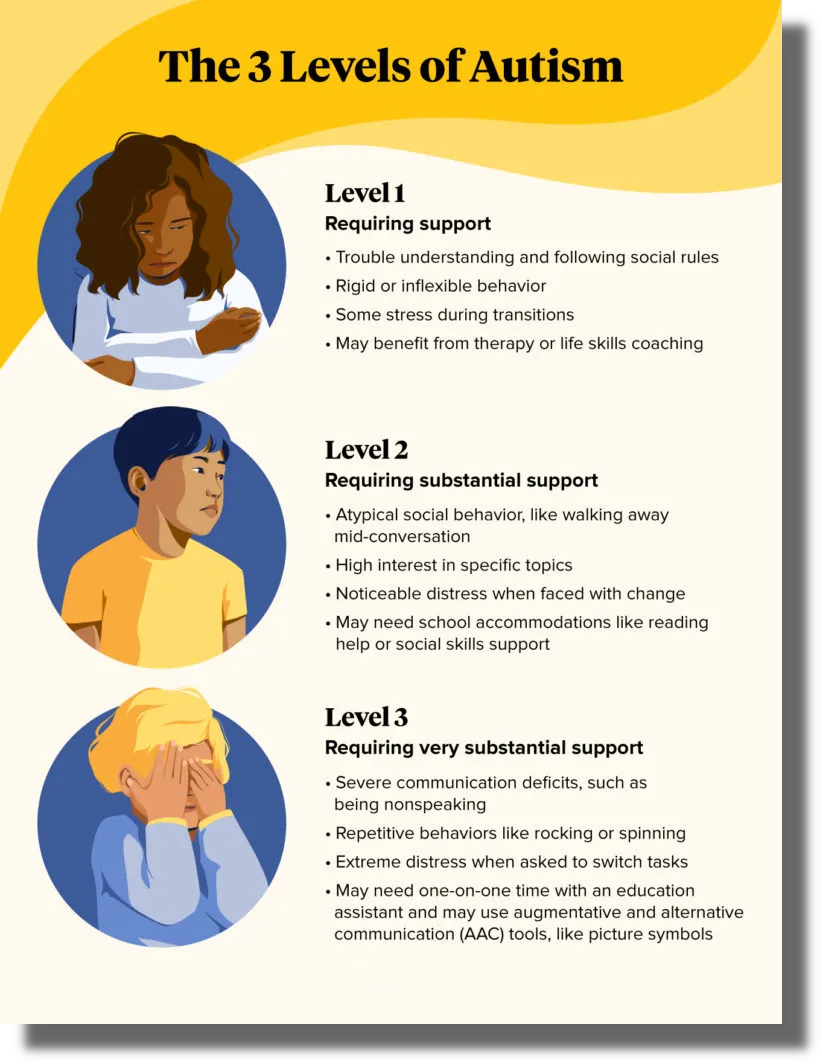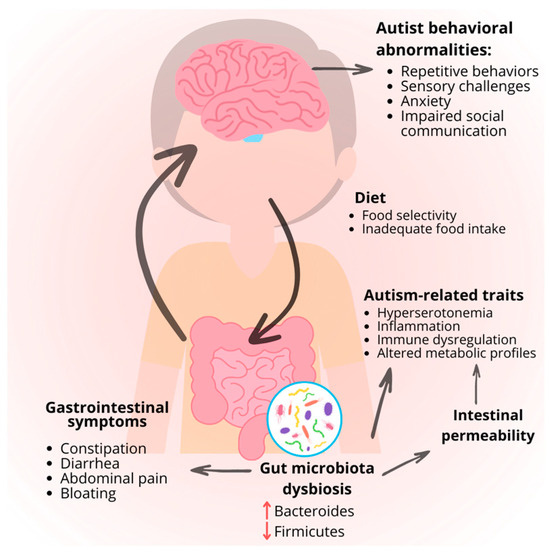Developing real connections with help from an Autism Therapist
Developing real connections with help from an Autism Therapist
Blog Article
Understanding the Impact of Behavioral Autism on Life and Social Communications
You may not recognize exactly how deeply behavioral autism impacts daily life and social communications. Individuals on the range typically navigate a globe loaded with interaction hurdles and sensory overload. These obstacles can lead to aggravation and seclusion, impacting their partnerships and general wellness.
Defining Behavioral Autism and Its Features
Behavioral autism, usually referred to as autism spectrum condition (ASD), encompasses a series of conditions identified by obstacles in social communication, interaction, and repeated behaviors. You could discover that individuals with ASD commonly struggle to analyze social hints, which can cause misunderstandings in discussions. They may discover it hard to develop eye call or participate in tiny talk, making social scenarios really feel frustrating.
Communication troubles can materialize in numerous means, from delayed speech development to a choice for utilizing fewer words. Repetitive behaviors, such as hand-flapping or shaking, can act as coping devices to handle anxiety or sensory overload. These features can profoundly affect life, making it necessary for you to recognize and support those with ASD. By identifying these characteristics, you can cultivate a setting that promotes approval and encourages reliable communication, helping people with autism grow in their daily communications.
The Spectrum of Autism: Understanding Variability in Actions
Autism range problem (ASD) isn't a one-size-fits-all diagnosis; it differs commonly among people. You may notice that some people with ASD exhibit mild signs, while others might encounter much more considerable difficulties. This variability can materialize in habits, rate of interests, and sensory level of sensitivities. You might experience individuals who are very verbal and engage quickly in discussions, while others might prefer solitary activities or communicate non-verbally.
In addition, the means people with ASD respond to sensory input can differ considerably; some may be overwhelmed by brilliant lights or loud noises, whereas others prosper in promoting atmospheres. The spectrum also includes differences in social interactions; some people may battle to interpret social hints, while others navigate social settings with loved one simplicity. Understanding this irregularity is essential, as it aids you appreciate everyone's one-of-a-kind experience and dressmaker assistance to their specific needs, fostering a much more inclusive environment for everybody.
Communication Difficulties Dealt With by People With Autism
When you connect with people on the autism spectrum, you might observe their special interaction obstacles. They typically encounter problems with both spoken and nonverbal hints, which can affect their social interactions. Understanding these obstacles is necessary for cultivating better connections and support.

Verbal Communication Troubles
Lots of people on the autism spectrum experience spoken interaction troubles that can significantly impact their day-to-day communications. Your rate, tone, or volume may not line up with social assumptions, causing others to misunderstand your intents. Identifying these obstacles can aid you and your support network create approaches to boost interaction and cultivate far better links with others in your daily life.
Nonverbal Interaction Obstacles
Verbal communication isn't the only difficulty people on the autism spectrum face; nonverbal interaction barriers can be simply as significant. These challenges can lead to misunderstandings or misinterpretations of social signs, making interactions really feel confusing or overwhelming. By attending to nonverbal interaction, you can find methods to boost your social experiences and boost your overall high quality of life.
Social Interaction Influences
Social communications can commonly really feel frustrating due to the special communication obstacles dealt with by individuals with autism. Identifying these obstacles can help you locate techniques to enhance interaction, such as practicing social skills in safe settings or utilizing visual aids. Recognizing your demands allows you to navigate social communications with greater self-confidence and ease.
Social Communication and Relationship Structure in Autism
While building relationships can be challenging for people with autism, comprehending their unique viewpoints and communication designs can promote meaningful links. You might observe that many people on the range choose straight communication and might battle with social hints or small talk. By being simple in your communications, you can assist develop an atmosphere where they feel comfy.
Involving in shared passions can additionally serve as a bridge to deeper connections. Whether it's a pastime, a favorite program, or a common passion, these usual threads can open doors to friendship.
Day-to-day Live Routine: Navigating Approaches and difficulties
Maneuvering everyday life regimens can be specifically testing for people with autism, particularly when unforeseen modifications take place. To navigate these difficulties, consider applying visual routines or checklists.
Developing a regimen that consists of sensory breaks can also be advantageous. You can plan brief breaks throughout your day to charge. It's important to interact with those around you, allowing them know your choices and requirements. This aids produce an understanding setting.
Last but not least, practice mindfulness methods to manage stress and anxiety and anxiousness. Simple breathing exercises or grounding strategies can make a significant difference. By including these strategies, you can enhance your day-to-day regimen and minimize disruptions, making life really feel a lot more workable.
Toughness and Capabilities of Individuals on the Autism Range
Understanding everyday life routines is just one element of the autism experience. Many individuals on the autism spectrum possess exceptional staminas and abilities that set them apart.
Additionally, your memory skills typically radiate, especially in locations of rate of interest. Autism Therapist. This flair for keeping information can make you an important resource in fields like art, technology, or science. You might additionally show strong aesthetic reasoning, allowing you to visualize complicated concepts and fix problems artistically
In addition, your special point of view on the world can foster compassion and understanding in others, enhancing social interactions. Embracing these strengths not just improves your confidence but likewise assists others appreciate the varied abilities you bring to the table.
Developing Comprehensive Settings for Individuals With Autism
Developing comprehensive settings for people with autism begins with making sensory-friendly spaces that provide to their special demands. You can additionally promote possibilities for social communication, aiding to build connections and friendships. By making these modifications, you'll contribute to a more inviting environment for every person.
Creating Sensory-Friendly Spaces
While designing sensory-friendly areas, it's important to show on the distinct demands of people with autism. Read Full Report Include silent zones where individuals can retreat and charge when overwhelmed. Consist of aesthetic routines or clear signs check out this site to assist individuals navigate the space confidently.
Advertising Social Interaction Opportunities
Designing sensory-friendly areas not just addresses individual convenience yet also sets the phase for purposeful social communications among people with autism. Motivate peer mentoring, matching individuals with autism with encouraging peers who can direct them through social situations. By implementing these techniques, you can enhance social chances, helping individuals with autism develop friendships and strengthen their social skills in a secure, welcoming atmosphere.

Frequently Asked Inquiries
Exactly How Can Friends Assistance Someone With Behavioral Autism?
You can support a buddy with behavioral autism by holding your horses, listening proactively, and valuing their boundaries. Participate in activities they enjoy, connect openly, and produce a comfortable atmosphere where they really feel valued and understood.
What Resources Are Readily Available for Parents of Kid With Autism?
You can explore various sources for moms and dads of kids with autism, including support groups, academic websites, and neighborhood social work. Getting in touch with various other moms and dads can likewise supply valuable understandings and shared experiences to assist navigate challenges.
Can Behavioral Autism Adjustment Gradually?

Yes, behavioral autism can change over time. You might discover shifts in interaction, social abilities, and habits as your youngster grows. Early treatment and support commonly play vital duties in these developmental changes.
Just How Do Sensory Sensitivities Impact Daily Life?
Sensory sensitivities can make daily experiences frustrating. You may battle with brilliant lights or loud sounds, resulting in stress and anxiety or see post avoidance. Discovering settings that suit your requirements can considerably enhance your comfort and general every day life.
What Prevail Misconceptions About Behavioral Autism?
You may think behavioral autism just influences interaction skills, however it's even more complicated. Several think people lack empathy or intelligence, which isn't true. Recognizing these false impressions assists foster acceptance and support for those on the spectrum.
Behavioral autism, usually referred to as autism spectrum disorder (ASD), incorporates an array of conditions defined by difficulties in social communication, communication, and repetitive habits.Social interactions can frequently feel overwhelming due to the special communication challenges dealt with by individuals with autism.Creating sensory-friendly rooms not just addresses private convenience but additionally sets the stage for significant social interactions amongst people with autism. Motivate peer mentoring, coupling people with autism with helpful peers who can lead them through social circumstances. By implementing these techniques, you can boost social possibilities, aiding people with autism build friendships and enhance their social skills in a safe, welcoming environment.
Report this page